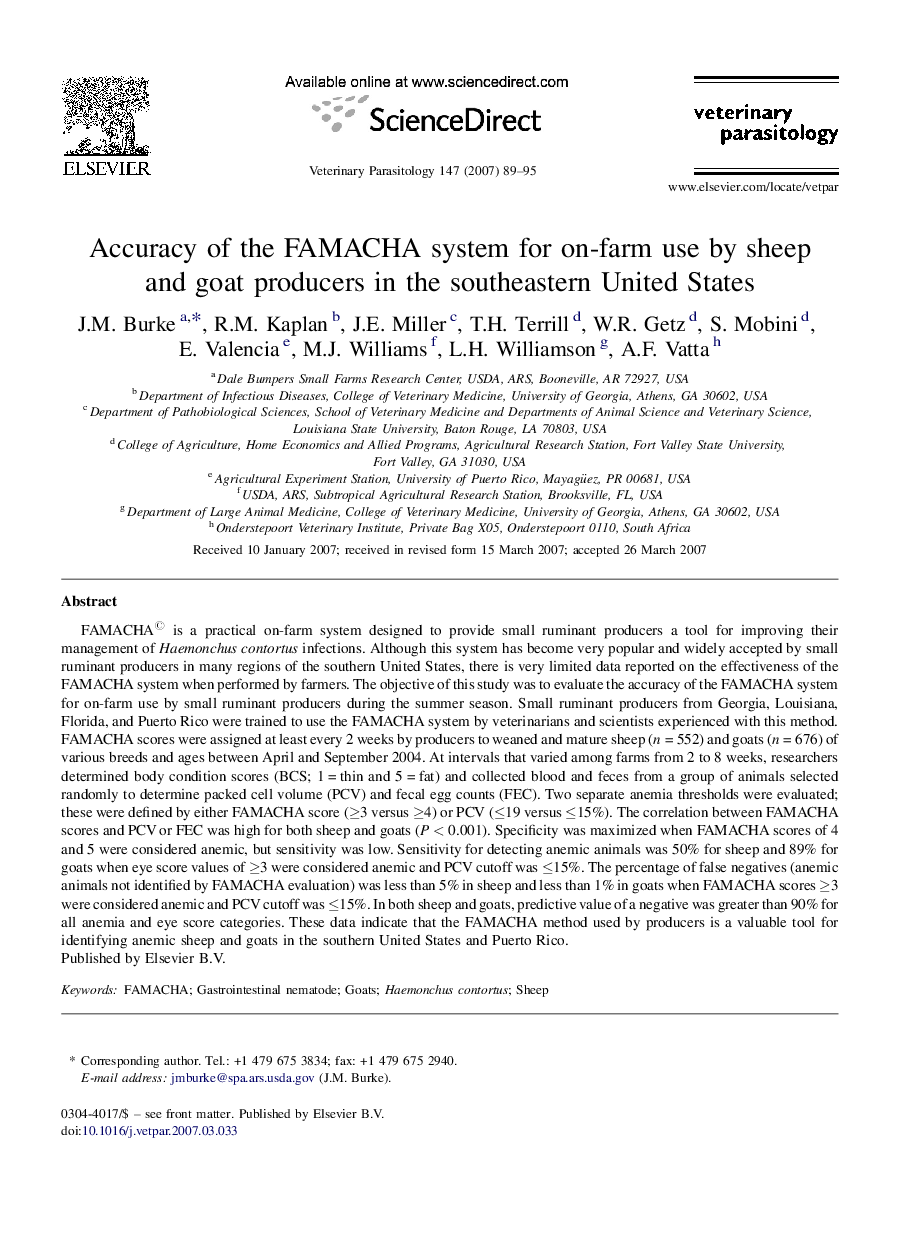| کد مقاله | کد نشریه | سال انتشار | مقاله انگلیسی | نسخه تمام متن |
|---|---|---|---|---|
| 2471928 | 1555780 | 2007 | 7 صفحه PDF | دانلود رایگان |

FAMACHA© is a practical on-farm system designed to provide small ruminant producers a tool for improving their management of Haemonchus contortus infections. Although this system has become very popular and widely accepted by small ruminant producers in many regions of the southern United States, there is very limited data reported on the effectiveness of the FAMACHA system when performed by farmers. The objective of this study was to evaluate the accuracy of the FAMACHA system for on-farm use by small ruminant producers during the summer season. Small ruminant producers from Georgia, Louisiana, Florida, and Puerto Rico were trained to use the FAMACHA system by veterinarians and scientists experienced with this method. FAMACHA scores were assigned at least every 2 weeks by producers to weaned and mature sheep (n = 552) and goats (n = 676) of various breeds and ages between April and September 2004. At intervals that varied among farms from 2 to 8 weeks, researchers determined body condition scores (BCS; 1 = thin and 5 = fat) and collected blood and feces from a group of animals selected randomly to determine packed cell volume (PCV) and fecal egg counts (FEC). Two separate anemia thresholds were evaluated; these were defined by either FAMACHA score (≥3 versus ≥4) or PCV (≤19 versus ≤15%). The correlation between FAMACHA scores and PCV or FEC was high for both sheep and goats (P < 0.001). Specificity was maximized when FAMACHA scores of 4 and 5 were considered anemic, but sensitivity was low. Sensitivity for detecting anemic animals was 50% for sheep and 89% for goats when eye score values of ≥3 were considered anemic and PCV cutoff was ≤15%. The percentage of false negatives (anemic animals not identified by FAMACHA evaluation) was less than 5% in sheep and less than 1% in goats when FAMACHA scores ≥3 were considered anemic and PCV cutoff was ≤15%. In both sheep and goats, predictive value of a negative was greater than 90% for all anemia and eye score categories. These data indicate that the FAMACHA method used by producers is a valuable tool for identifying anemic sheep and goats in the southern United States and Puerto Rico.
Journal: Veterinary Parasitology - Volume 147, Issues 1–2, 20 June 2007, Pages 89–95